Latest education news for schools across the globe


Popular reports downloaded from ami Education's Infinity+ cashless system.
Catering reports offer valuable insights for schools. From using food ordering reports to improving the decision-making process when planning menus to free school meal usage insights, utilising this type of information plays a significant role in helping schools to improve processes for future investments.
There are many ways reports from cashless software, like Infinity+, can help caterers learn more about the business. Infinity+ offers fully automated reporting, with the ability to download reports into Excel. Infinity+ enables schools to gain insights faster, make informed decisions, and help increase school meal uptake.
By using the Infinity+ cashless catering system, caterers and schools can download reports such as free school meal usage and meal uptake. These reports give caterers the upper hand in knowing important information, like how many school meals to prep for each day, which meals aren't selling well, and more. Understanding essential data like this helps caterers reduce the amount of wasted food, which trickles down to saving money and time spent ordering new stock.
There are ten popular reports from Infinity+ cashless that schools and caterers use to make informed decisions, helping them save time on banking activities and understand sales trends.
Catering Report
The catering report is the most popular report used by ami Education customers. This report gives the caterers the resources to break down transactions by period, account type, and amount of supplement spent at multi-establishment sites. Caterers can get an in-depth overview of school lunch transactions, helping to predict ordering trends from pupils. An overview of school lunch transactions is vital, as it lowers the chance of food waste and knowing what stock to order for the future.
Sales Mix Report
Knowing the number of products sold can significantly increase the understanding of favoured food/drink items. The sales mix report provides caterers and schools with an overview of the number of products sold, split by product categories during a specified date or time frame. Utilising this report can save caterers and schools the manual process of working out sales at the end of the day, week or month, allowing them to compare product sales to previous months.
To see the eight other popular reports used by schools and caterers, download our top 10 Infinity+ Reports guide to learn more!

Integrated Chip & Pin is now available for schools! We are delighted to announce that Ami Education customers can directly facilitate fast, automatic card payments effortlessly with our Infinity+ cashless system.
Launching integrated Chip & Pin to the education market
Brand new to the education market, our Chip & Pin feature is fully integrated with our Infinity+ cashless solution, making time-consuming payments and manual reporting a thing of the past.
Schools can now accept all major forms of payment, including debit and credit cards, contactless payments, and Apple Pay and Google Pay. This means schools can expand their catering offering to parents, guardians, and school visitors without being registered in their cashless system.
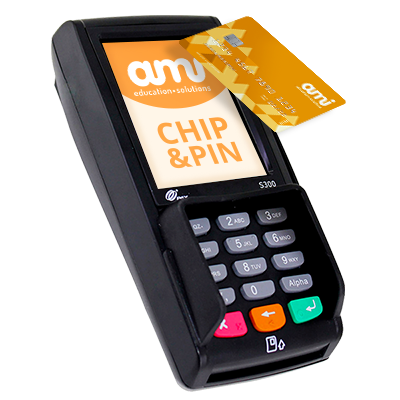
The benefits of integrated card payments for schools
The integrated solution automatically displays transaction amounts on the payment pin entry device (PED) at the PoS for seamlessly quick payments. Furthermore, all card payments are consolidated as part of your cashless takings report, giving schools one true source without the need to manually add up card payments separately at the end of the day.
The key features and benefits of Chip & Pin include:
- Fast and secure payments
- Remove unnecessary payment barriers to help increase catering uptake
- Supports all major card payments and Apple Pay and Google Pay
- Reduced human error in payments and reporting
- Consolidated cashless reports, with no manual adding up at the end of the day

"Here at Ami Education, we are delighted to announce the release of our integrated Chip & Pin functionality to the education sector. This is a feature that our customers, particularly sixth-form colleges and secondary schools, are excited to integrate with their Infinity+ cashless solution, and I am so pleased to announce that we've done exactly that!
This launch will change the world of cashless catering, and it's all down to how we listen, engage, and deliver to our customer base. Massive applause to everyone involved and a big thank you to our customers.
Ash Grabowski, Business Development Manager at ami Education
Impact of integrated Chip & Pin
Here at Ami Education, we help schools deliver a quick and consistent school meal service through our cashless catering technology. This new Chip & Pin integration with our Infinity+ cashless solution allows schools to boost sales with increased uptake of catering at school events and parent evenings and by opening up their catering offering to visitors. There are enormous time and monetary savings in switching to this integrated method, especially for our customers currently utilising 3rd party Chip & Pin payment providers.
Want to book a demonstration with our team?
Book a call today.
Or take a look at our Chip & Pin and Infinity+ solutions here.

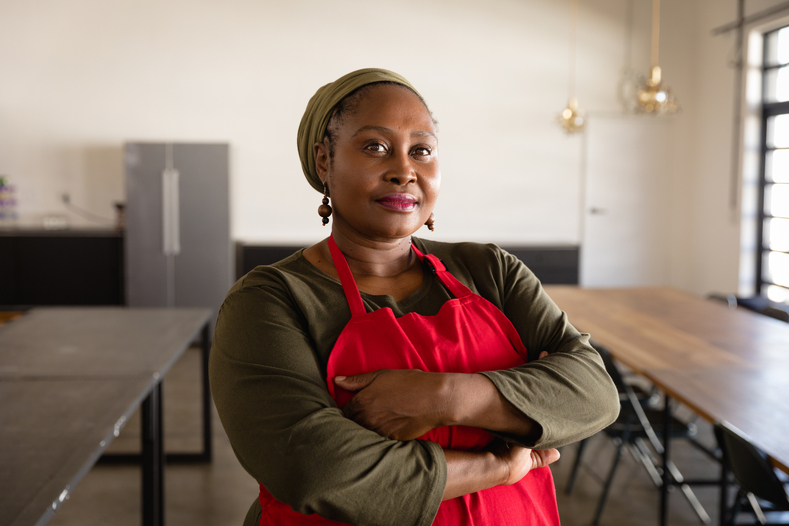
Over the past two years, the Coronavirus pandemic has caused widespread chaos and disruption across the country, perhaps most notably to children and staff in education.
Since March 2020, UK children have spent months in and out of local and national lockdowns. These disruptions resulted in an unprecedented amount of time missed from the classroom and a nationwide appeal to increase the standards of home food parcels for free school meal kids who missed out on their regular hot and healthy meals usually served from the canteen.
Despite the hardships and challenges that everyone in education catering has faced, it's been brilliant to see how the industry has bounced back since reopening.
Food parcels and school responses
In January of this year, one mother took to Twitter to express her shock over the quality of a food parcel she had received. The image shared 15,000 times on social media sparked a considerable discussion across the UK about the quantity and quality of food distributed to children's homes claiming free school meal provision.
In response to the criticism, some schoolteachers and caterers began stepping in to help struggling children and parents from their own pockets, showing the incredible kindness of those working in education.

One school staff member, Zane Powels, donated 7,500 meals in total alongside laptops to assist vulnerable children whilst they were learning at home. The hero from Western Primary School in Grimsby was given an MBE for his extraordinary efforts, delivering 138 meals a day to children - walking a total of 550 miles during last year's first lockdown.
Another team of school caterers from Thomas Deacon Education Trust in Peterborough also pulled together to deliver 600 meal parcels over four weeks. Catering Operations Manager for TDET, Michael Dove, said:
It has been an honour to support our local community throughout this pandemic. We understand that food plays an important role in enabling our pupils to achieve their very best. For some children, the meal they would usually have at school would be their only hot meal of the day, and we must continue to provide this for them in the best way we can.
This collective effort of school caterers led to a nationwide review of the school meal packages, prompting change and helping to protect vulnerable children at a time when they needed it most.
Reopening School Kitchens
When schools returned, the standard lunch service had changed completely. New social distancing measures were in place, and more schools started to implement pre-ordering solutions to allow for a safer and simpler grab-and-go system.
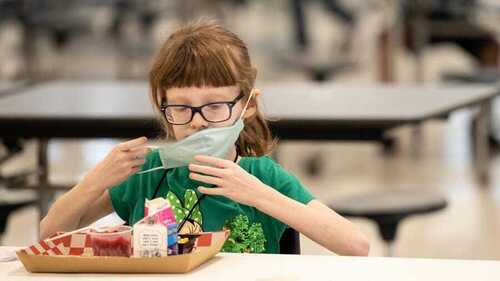
Not only could thousands of vital school caterers return to working at full capacity, but the pause from ordinary operations has allowed the industry to revaluate its approaches towards sustainability and food waste.
A report produced by Footprint Intelligence which focused on conquering challenges in education catering during COVID-19, discovered that 75% of foodservice professionals believed that sustainability had been side-lined because of the pandemic. A further 96% reported that COVID-19 had increased the use of disposables. But there is hope! The same people noted that other solutions are proven to work, including existing crockery and reusable options such as bento boxes and how there was now the momentum to change a broken system.
The report concluded that with the learnings of the pandemic considered, there is no better time than now to begin future-proofing the school lunch service for the benefit of the planet. Whether it be through trailing a plant-based menu, implementing pre-ordering solutions, or pushing for policy changes, the resilience from the education catering industry throughout these challenging times has meant that it now can bounce back better than ever before.
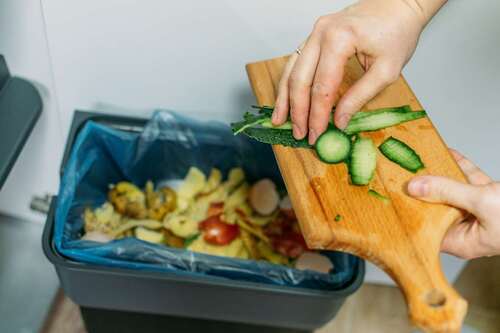
Celebrating the education catering industry
Finally, it's been a challenging year, so celebrating the work of the industry is paramount. With awards such as The LACA Awards For Excellence and the Public Sector Catering Awards on the calendar, these events will allow us to celebrate the unsung heroes of the pandemic and push the industry to even greater heights as it bounces back to its former glory.
We can't wait to see what happens next.
Get started

When presented with a slice of pizza or a salad, most pupils will likely choose the pizza. The fast, greasy, and fried option will ultimately appeal to many students.
When faced with this reality, combined with the ever-increasing accessibility of fast, takeaway foods from outlets such as Deliveroo and JustEat, schools and parents face increasing challenges to get pupils to make healthier eating choices in schools. At ami Education, we are looking at practical and straightforward ways to encourage healthy eating in schools and the impact on pupils.
Emphasise nutrition education
Many of us understand how the food we eat impacts our everyday life, including our concentration levels, mood, skin, hair, and even sleep. However, some pupils, especially those without an active interest in food and nutrition, risk not understanding the full extent to which the food they put in their bodies affects their life.
Schools, parents, and guardians can take an active role in educating pupils about nutrition and the impact of a healthy diet on their ability to learn and their life outside of the classroom.
Focusing on how food can make us feel and demonstrating how the choices we make regarding food directly affects the way we behave enables action-based learning, which pupils can apply to their everyday life.
For example, demonstrating how switching from white pasta to wholewheat pasta can keep us fuller for longer and reduce the risk of excess snacking and how simple changes can significantly impact and encourage pupils to take an active role in their health.
Food labels and online resources
Nutrition and allergen information on food labels is mandatory. With Natasha's Law soon to come into effect, which will require all food businesses, including school caterers, to include accurate and in-depth ingredient lists on food labels, pupils must learn what this information means to them.
Nutrition information can help us make informed food choices. Educating pupils on reading and processing food labels is crucial, especially if we want pupils to carry healthy eating habits into adulthood.

Teachers can provide worksheets for pupils to fill in and compare food labels from different products in the classroom. Food A Fact Of Life, managed by the British Nutrition Foundation, which provides free educational resources for nutrition education, suggests providing pupils with clean packaging from a range of standard and healthy food options.
The pupils can read and compare food labels and discuss the findings with their classmates, such as the first ingredient listed in each product, compare the sugar and fat contents, and why some products are more likely to contain higher amounts of sugars than others.
Online resources are not only available to schools but also parents and guardians. Websites such as Change4Life, launched in 2009 as part of a national goal set out in the government's Healthy Weight, Healthy Lives initiative, is designed to ensure parents and guardians have the essential support and tools they need to make healthier choices for their family.
Change4Life provides fun activities, recipes, and a range of food facts to help educate families on nutrition and provide a fun and interactive way for children to learn about a healthy lifestyle. Visit the Change4Life website to access these resources.

School dinners vs packed lunches
Whilst school catering teams strive to provide nutritious and tasty lunches to help power pupils through the day, the prevalence of packed lunches is a challenge for schools aiming to meet strict nutritional standards.
There is currently no government guidance on packed school lunches in UK schools. Whilst individual schools in England can decide their policy on food brought in from home, compared with hot school meals required to meet strict nutritional standards, packed lunches face fewer restrictions and increase the likelihood of unhealthy food brought in.
Research conducted by the Children's Food Trust in 2013 compared hot school meals against packed lunches following new compulsory school food standards. The research found that school meals are now consistently more nutritious than packed lunches, giving children who eat them a better foundation for good health.
For pupils of all ages, opting for hot school lunches where possible ensure their lunch choices will contain:
- High-quality meat, poultry or oily fish
- Fruit and vegetables
- Bread, other cereals and potatoes
Parents and pupils can also rest assured that restrictions for hot school meals apply to:
- Drinks with added sugar, crisps, chocolate, or sweets
- Limits of no more than two portions of deep-fried, battered, or breaded food a week

Offer a familiar ordering experience for pupils
Technology plays a significant part in our everyday lives, especially secondary school students. With easily accessible food delivery apps like Uber Eats and Deliveroo on every mobile phone, it has never been easier to provide a solution that competes with these out-of-the-gate spending options and encourage pupils back in the dining hall.
Technology like ami's Infinity+ Order app breaks the confines of the school dining hall and enables pupils to pre-order their school meals directly from their mobile phone, anytime, anywhere. Infinity+ Order offers secondary school pupils a familiar food ordering method whilst providing a host of other benefits to pupils and school staff, including:
- Reduced lunch queues - pupils pre-order their meals ready to collect at lunchtime
- Pupils can view their live cashless balance and previous transaction history anytime, anywhere
- Helps reduce food wastage by informing school catering teams of what to prepare in advance
- Reporting suite assists with stock control and trend predictions
From ground to fork
An increasing number of UK schools are now dedicating school ground spaces to growing fresh fruit and vegetables to serve in the school dining hall.
This new teaching method encourages pupils to make healthy eating choices in school by involving them in where their food comes from and teaching about food production outside of the classroom and the overall process from ground to fork.
For establishments with ground space to spare, providing areas for pupils to grow fresh fruits and vegetables teaches them to take an active interest in the food they eat.

Teaching pupils the value of growing their food encourages students to opt for lunch choices they grew and provides freshly grown, organic foods that appeal to students.
One UK school pioneering the way in growing and rearing its produce is Charlton Manor Primary School, based in South-East London. Its pupils grow figs, oranges, tomatoes, grapes, and kiwis. There are also chickens and three beehives on-site, whilst the school has a campaign team made up of year 5 and 6 pupils to raise awareness about healthy diets.
Charlton is a brilliant example of a school bringing together gardening and healthy eating. With vision and a bit of dedication, any school can get growing." Chris Collins, Head of Organic Horticulture for Garden Organic.
Get started
Encouraging students to make healthy choices in school can often seem like an uphill battle. With these simple tips and a wealth of online resources available for schools and parents, we can all get involved with inspiring the next generation to take control over their health, both inside and outside of the classroom.
Interested in learning more about Infinity+ Order? Get in touch to learn more about how pre-ordering can benefit your school.

The role of schools in forming lifelong healthy eating habits cannot be underestimated. By providing effective nutrition education alongside healthy school meals, schools can equip pupils with the tools to make healthier choices in adolescence and later life.
This week marks the British Nutrition Foundation's Healthy Eating Week, which focuses on the finding your healthier you journey. We have compiled seven practical steps to improve nutrition in schools and encourage positive long-term eating habits.
What are the government food standards and regulations for schools?
According to gov.uk, food served in schools and academies in England must meet the School Food Standards so that children have healthy, balanced diets.
Meals must provide high-quality meat, poultry or oily fish, fruit and vegetables, bread, and other cereals and potatoes. There cannot be drinks with added sugar and crisps, chocolate or sweets in school meals or vending machines, alongside a limit of no more than two portions of deep-fried, battered, or breaded food a week.

Are schools delivering adequate nutrition to staff and pupils?
Whilst the School Food Standards are in place to ensure schools encourage pupils to develop healthy food choices; some schools struggle to get the correct nutrition and balanced diet to not only their students but to their staff body, and for various reasons.
There are various reasons for this struggle, and one most evident is the lack of efficient management in their school systems.
One of the biggest offenders of an unhealthy diet in pupils is the day-to-day slog of mealtime queuing in schools. Long wait times with shorter lunchtimes increase pupils' likelihood of making lunch choices based on convenience and availability.
Therefore, mealtime queuing can be one of the main contributors to unhealthy food choices in schools, leading to malnutrition, reduced productivity, and childhood obesity.
Out-of-gate spending
As pupils turn to alternative methods to queue for school lunches, out-of-gate spending increases further. According to Q Minder, a secondary school in London found that its pupils rejected food in a school canteen and instead favoured the option to leave school grounds and purchase their lunches, rather than queue for the school meals provided.
This kind of out-of-gate spending can mean students are consuming unhealthy foods for lunch, which the school cannot have complete control over, increasing the risk of childhood weight gain and poor nutrition in children.

Doctor Dame Sally Davies warns obesity poses such a threat to the country that we should treat it as a national risk alongside terrorism. This statement was accompanied by a survey that found obesity prevalence was 13.9% among 2- to 5-year-olds, 18.4% among 6- to 11-year-olds, and 20.6% among 12- to 19-year-olds.
How can schools teach children about food nutrition and a healthy diet?
According to the school blog KSL, there are seven helpful pointers to assist schools with food with pupils healthily and educationally. These include:
- 1. Be mindful of language - avoid using bad versus good language surrounding food choices, which teaches kids to categorise food types based on morality can lead to shame and guilt when indulging in the occasional treat.
- 2. Teach that food is fuel for the body - encourage children to associate nutritious foods with gaining energy to do all the things they love.
- 3. Encourage trying new foods - use taste testing, introduce variety and teach pupils about the exciting foods on offer in different countries.
- 4. Teach the principle of variety - provide education on a balanced meal, and link this back to the enjoyment of food and how nutritious food can also be tasty.
- 5. Back to nature - connect kids to gardening and agriculture and teach them where foods come from with 'grow your own' activities in lessons.
- 6. Teach the importance of inclusivity - reinforce the idea that all foods can be included, in moderation, in a balanced diet. Avoid discussing eliminating food groups.
- 7. Teach kids to respect biological diversity - discuss messages of size diversity in the context of a lesson on nutrition.
The link between cashless operations and pupil diets
Cashless catering systems, such as ami's Infinity + software, offer complete flexibility and work around each school's requirements. During school mealtimes, cashless systems reduce queues by using quicker identification methods and pre-order payments. These cashless methods ensure pupils spend less time queuing and have more time to eat a healthy school lunch.
The pre-order aspect of this software minimises food wastage whilst providing detailed allergy and dietary requirement information. The app also enables schools to remove any potential discrimination of students by offering Free School Meals (FSM) anonymity.
A LACA survey revealed that 4.9% of pupils entitled to a free school meal do not take up their entitlement, possibly due to parents not wanting their children to face potential embarrassment and discrimination.
A cashless system also promotes healthy eating in schools as it reduces and controls the level of out-of-the-gate spending on unhealthy meals and snacks. Pre-order software, such as the Infinity+ Order pre-order app, mirrors modern food ordering apps such as Deliveroo, which encourages pupils to control their food choices and guarantees they can enjoy their favourite lunch every day.
Healthier lunch options that meet nutritional requirements are among the most effective ways to tackle the childhood obesity crisis, leading to a better learning environment and reducing food insecurity by establishing a lifetime of healthy habits in students.
Furthermore, ami's Infinity + cashless catering and ID management software enables parents to take an active role in their children's daily school food consumption, despite them not being present at school throughout the day.
When using the Infinity+ Order pre-order app, parents can sit with their children and help them make educated and balanced food choices, ensuring their child is getting a healthy and nutritious meal during school hours. The cashless catering options of AMI Education means parents can rest assured the money spent on school meals is used to make healthy food choices backed by a comprehensive education on nutrition in schools.
Are you looking to make your school cashless?
Get in touch with our team to see how ami's cashless solutions can benefit your school.
Pre-order school meals on-the-go
We are delighted to launch our pre-order app, Infinity+ Order, the contactless app that enables pupils to pre-order their school meals in advance directly from their phones.
The simple pre-ordering solution is our latest innovation to join our Infinity+ range of cashless identity management and registration software for schools and colleges worldwide.
Contactless meal ordering
The Infinity+ Order app is linked with Infinity+ cashless software to facilitate a contactless lunchtime for pupils to ensure a simple payment and service process.
The payment is automatically deducted from their cashless account when pupils order their school meals via the app. This function offers a fully contactless lunch service, and schools are encouraged to control traffic flow with designated pre-order pick-up points.
Head of Operations at ami Education, Tony Reeves, said:
When COVID-19 forced schools around the world to close, we knew that it was vital to ensure that there was a safe solution in place for pupils to pre-order and collect their lunch when schools reopen. We are excited to offer schools a simple way to do this with the Infinity+ Order app, which allows pupils to order, pay and collect their lunches with just a few clicks.
Key features of the pre-order app
With retailers adapting to the COVID-19 crisis by switching to contactless order methods, many schools have implemented similar solutions, with ami's Infinity+ Order pre-order app offering schools a way to mimic out-of-the-gate spending.
Infinity+ Order is designed to improve efficiencies for school catering teams by notifying staff in advance of meals ordered to allow catering teams to prepare food accordingly and reduce food wastage. Key benefits of Infinity+ Order include:
- Removes the need for cash in the dining hall
- Completely contactless lunch service
- Pupils can check their live cashless balance anywhere and anytime
- Software is linked to the Infinity+ cashless system for a seamlessly integrated pre-order system
- Pre-order school meals in advance for the date of their choice
- School catering teams are notified of meals ordered in advance and can prepare quantities of food accordingly, reducing food wastage
- Pupils and parents can view current and previous orders
What Parents say about Infinity+ Order
Following the app launch, a selection of UK schools implemented Infinity+ Order as part of their cashless catering solutions. When reviewing the app, one parent said:
The app is amazing. My daughter downloaded it and now pre-orders almost every day.
- Secondary school parent, Preston
Interested to learn more about Infinity+ Order?
Speak with our friendly team at ami Education. Get in touch to discuss the right software solutions for your education establishment.

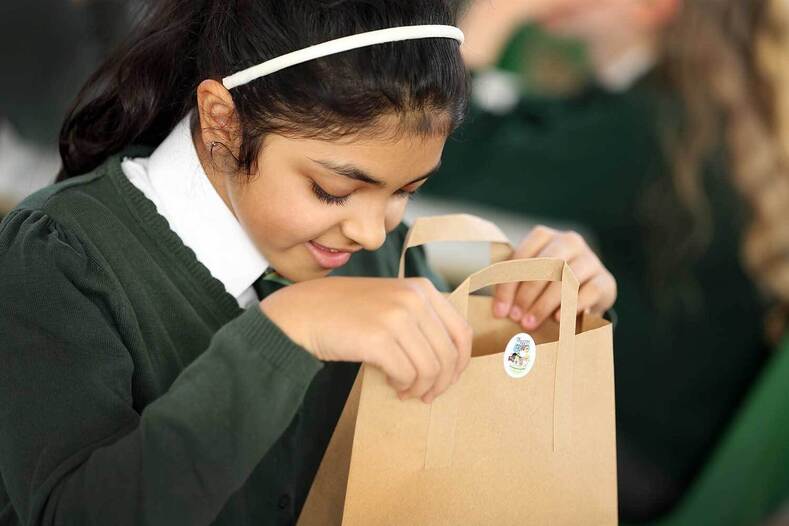
During the Coronavirus pandemic, innovative technology such as pre-order apps and cashless catering products have come into a league of their own.
From improving the flow of traffic within the school dining hall to helping schools to maintain social distancing guidelines by enabling students to use their mobile devices to select their food options anytime, anywhere, pre-order apps such as ami Education’s Infinity+ Order have proved their worth in the past year.
However, with so many more untold benefits, it's clear to say that the peak of school meal pre-ordering is far from over.
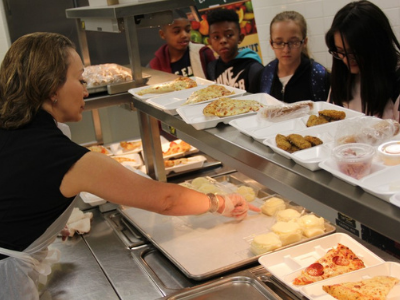
Why do we need pre-ordering after lockdown?
Outside of the context of COVID-19, pre-ordering technology still holds value. According to a recent Footprint Intelligence Report, 41% of foodservice professionals said schools with pre-ordering systems have reduced food wastage and increased lunchtime efficiencies.
Maintaining a streamlined lunchtime service is also vital for reducing the stress of school caterers who have worked tirelessly to provide students with meals during the pandemic. When students select their meals ahead of time, catering teams can produce the exact amount of food required, eradicating the need for over-catering and cutting down on food wastage, which is better for school budgets, catering staff, and the planet.
Cutting down on food wastage isn't the only way pre-ordering is helping schools to reach their sustainability targets. The Infinity+ Order app provides complete records of past orders, and the online payment integration means that receipts no longer need to be printed out at POS, saving paper and needless printing costs.
Moreover, the powerful reporting suite helps predict trends that can help with accurate stock control to save schools money and food from ending up in the cafeteria bin.

It's not just the environmental factors attracting schools towards the pre-ordering revolution. Cashless catering apps such as Infinity+ Order are widely accessible on mainstream download platforms such as the App Store or Google Play, meaning that any student with a smartphone can gain access to the ease of pre-ordering in just a few clicks.
This ability to order snacks and meals from a personal device also gives students claiming free school meals added anonymity throughout the ordering and collection process, ensuring that FSM students are comfortable in the dining hall.
As schools adapt to the new normal, their primary goal will be to help students who may have fallen behind catch up to where they need to be. Pre-order apps can help with this task by reducing the amount of time spent queuing, meaning that pupils can get back to lunchtime catchup clubs as soon as possible.
Ordering meals in advance also removes hunger-based decisions, which often consist of unhealthy snacks and drinks - encouraging pupils to pick a fully nutritious meal that can power them through the day and improve their concentration in class.
What's not to love? Find out more about implementing pre-ordering into your education environment here to access a world of benefits: https://www.amieducation.com/pre-order-app.

As International School Meals Day returns for its ninth year running, the awareness day aims to highlight the options for affordable and nutritious meals for schools whilst exploring the links between good food and children's mental and physical health.
The theme for 2021 is 'Eat for the Health of it,' which allows children, businesses, and communities to come together and share their thoughts, knowledge, and opinions regarding school meals. We're looking at the importance of nutritious school meals and the effects on a pupil's learning ability.
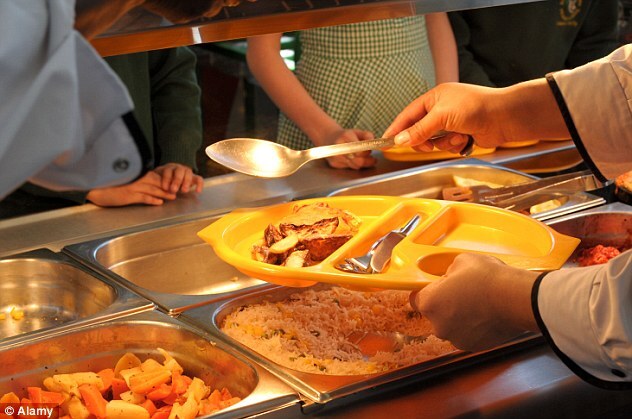
Why are healthy school meals so important?
Not only are schools required by law to serve nutritious school lunches containing high-quality meat, fish, fruit, vegetables, and bread, but they also provide the fuel for a more productive day of learning for students.
Eating a nutritious plate of food at lunchtime is proven to boost the attention span and alertness of pupils in the classroom in comparison to those who consume poor meals in the canteen. A study published by The Atlantic in 2018 discovered that schools that held a contract with healthier school catering services also performed better in state examinations, further boosting the reasoning for school meals to be at the forefront of industry conversation.
But school meals are not only crucial for boosting concentration. They are also the primary source of nutrition for students during a critical period of their development, providing the vital calories they need to maintain their physical wellbeing.
Conversations on food insecurity, which is on the rise and experienced by 2.3 million children between March and August in 2020 alone (End Child Food Poverty), are now more noteworthy than ever. These conversations have further elevated the importance of getting a nutritious, hot school meal out to children who otherwise may not receive the food they need.
Students claiming free school meals are especially vulnerable in this area, so assuring they have access to at least one good meal at school is pivotal to not only their health but to the quality of their education as well.

How can I get involved in International School Meals Day 2021?
There are many ways to participate in the event to suit your organisation or classroom! Here are some suggestions:
- Have an International Menu Day, featuring food from around the world
- Run food tasting sessions or hold other fun food-related activities
- Host cooking activities with an international theme
- Hold fundraising activities for charities to support school feeding programmes in developing countries
- Incorporate global citizenship, food culture and healthy eating into classroom learning
- Run seminars, workshops or events related to food traditions, ceremonies, or celebrations
- Research and publish information about school foods and the benefits of healthy eating
However, promoting the importance of school meals and continually highlighting their impact on the lives of young people all year round is critical. It helps implement changes to ensure pupils make healthy food choices at mealtimes.
Pre-ordering software such as AMI’s Infinity+ Order App are leading the way in encouraging children to eat healthily by removing hunger-based, random selections in the lunch queue, among other benefits which you can read about in our blog.
However you decide to celebrate #InternationalSchoolMealsDay, we hope you have a great time! For more information, visit the official ISMD website.

Reducing food wastage and increasing school uptake
Over the last three decades, the UK has seen some of the steepest education cuts, making it increasingly difficult for schools to balance their books. One of the most significant potentials for loss is mealtime and food ordering.
The introduction of the School Food Plan and universal free school meals means school kitchens are under pressure to provide healthy, nutritious meals within the government set allowance. Therefore, with over-catering being the potential source of profit loss, avoiding producing excess food must be a key consideration for schools.
What are the effects of over-catering in schools?
The biggest issue of over-catering in schools is without doubt wastage, both food and money wastage. Menu choices can significantly impact the efficiency of the school's catering budget. For example, if the school has too many options on the menu and is over-ordering food, many items may have low take-up.
Therefore, the school is likely spending money on food ending up in the bin. Streamlining the menu by adopting pre-ordering systems, like ami's Infinity+ cashless software, including the Infinity+ Order pre-order app, can help reduce food waste and save the school money on the cost of supplies.
As pointed out by Birmingham.Gov, catering staff in schools generally have information on the number of pupils they are cooking for, but, in most schools, they have no information about the specific numbers for each meal option. Although they are skilled at estimating how many children will choose each meal, they have no way of knowing the exact numbers, and this lack of information can result in food wastage.

Automating food orders within schools
With a system that allows pre-ordered school meals, children and parents can choose their preferred meal option each day, allowing catering staff to have an exact idea of the meals needing to be catered for, eliminating the element of waste.
As mentioned by Key Support, without software such as ami's pre-ordering options, waste is one of the biggest things driving high school catering costs. Schools can't refrigerate and reheat food once cooked. Instead, schools end up throwing away any uneaten cooked food.
Marcus Orlovsky, a Tedx host on education and real estate, believes that one way to address this problem is by taking a restaurant-inspired approach to catering. This approach means that food is only taken out of the refrigerator when needed, reducing the likelihood that excess cooked food will be thrown away and allowing schools to put those ingredients to use another day.
With the money and resources saved from using a pre-ordered school meal system, the school can invest in better, healthy, locally sourced food and ingredients, meaning better and more nutritious school meals for students and staff.
With ami's cashless software, free school meal (FSM) anonymity is maintained through a standardised cashless catering system to pre-order and collect food. This anonymity reduces FSM stigma and allows these pupils to enjoy the same lunchtime experience as their peers. Only the head and the school bursar will know which pupils qualify for free school meals, meaning no roll-call, colour-coding or separate queues.
In an age where food wastage and sustainability in education is more important than ever, schools must be aware of their impact on the environment and look to ways to minimise wastage and consequently increase uptake. With existing pre-ordering software that eliminates unnecessary waste, such as ami's Infinity product, now is the time for schools to adapt to the
technology.
Get in touch to learn more.

With the newly renewed prevalence of the food wastage issue, it is becoming more apparent than ever that the education sector needs to do its part to reduce the environmental impact of its catering systems and promote sustainability in schools.
A report published by Wrap.Org discovered food wastage from both primary and secondary schools as a result of a multitude of issues, including:
- The absence of ordering systems leading to kitchens over-catering for an unknown number of students
- Students at the end of the queue not being able to receive their food of choice, causing them to choose a meal they did not want and later waste it
- Pupils not knowing what meal options were available to them
- Lack of flexibility and control over food combinations or menus
However, with the help of pre-ordering technology - which has seen an increase in demand in recent years - schools can crackdown on food wastage and make massive savings on their budgets with a tailored and streamlined pre-order system for pupils.

Prioritise sustainability
Sustainability is now a vital factor in the fight for the future of our planet. With food wastage accounting for almost a quarter of all artificial greenhouse gases, reducing the number of meals in landfills is vital.
In fact, in an article published by Greener Kirkcaldy, it was said that:
If food wastage were a country, it would be ranked third after the US and China in terms of greenhouse gas production. With a pre-order app, school catering teams can know ahead of time which quantity of each meal option to produce before anyone ever steps foot into a queue - creating an immediate reduction in overall food wastage in schools.
We recently discussed on our blog how the wastage of meals costs schools over £250 million each year, meaning there is more reason than ever to implement pre-ordering into your education environment.

How does pre-ordering reduce food wastage?
Pupils can order what they want before lunchtime, meaning a faster queuing system with the food already prepared. Therefore, over-catering is eliminated, with reduced contact with other students, which has renewed importance amidst the COVID-19 pandemic.
Pre-order apps are also highly customisable, meaning schools can alter every aspect of a meal or remove items to suit students' personal preferences. Customising lunch choices takes away unwanted ingredients pupils would otherwise waste, not to mention the benefits of data trend predictions that can prevent the ordering of unnecessary stock and advanced preparation.
Does pre-ordering sound like something that could benefit your school? Introduce pre-order technology as a seamless addition to your cashless catering system.
Learn more > https://www.amieducation.com/products-and-solutions

In recent few weeks, stories of how schools have managed to reopen to all pupils safely have dominated education news outlets, with discussions on how most of these pupils have been eager to return to school, excited at the prospect of returning to a regular learning routine.
Whilst classroom learning is a crucial aspect of this routine; it is essential to consider how a positive lunchtime experience affects a student's learning ability. As today marks the start of the British Nutrition Foundation's Healthy Eating Week, we're looking at why nutrition must be a key priority for schools as the start of a new style of learning begins.

Importance of school meals during lockdown
When schools closed in March, this brought a period of unrest and disruption to the routine of many, especially to younger children who were still getting used to the regular school routine and the benefits that it brought.
Providing pupils, especially those eligible for free school meals and whose parents/guardians were made redundant, with a regular supply of nutritious meals was crucial for education professionals. It highlighted the fantastic work done within the sector.
One example of this was the tireless effort put in by headteacher Zane Powles to hand-deliver 7,500 free school meals to his students in Grimsby. Another prominent case of the fight to provide children with free school meals was by footballer Marcus Rashford. He successfully called for the government to reverse a decision not to provide free school meal vouchers during the summer.

Those admirable efforts to help struggling families during lockdown show the importance of school meals and how schools can provide a vital service in keeping pupils well-fed with delicious and nutritious meals.
According to the National Food Strategy, the crisis of child food poverty is only growing, with up to 1.5 million more children in England eligible for free school meals. Therefore, when many pupils rely on their free school meal as their main meal of the day, especially after months when pupils may have experienced limited access to healthy food, this heightens the need to provide pupils with nutritious food during lunchtime.
While many factors affect a child's learning ability, providing them with a healthy lunch after months of uncertainty will be crucial to make up for time lost in the classroom.
Government regulations
Government regulations state that food served in schools and academies in England must meet standards that require the provision of good-quality meat, poultry or oily fish, fruit and vegetables, bread and other cereals and potatoes.
Drinks with added sugar and crisps, chocolate or sweets are banned in school meals and vending machines, as well as a limit of no more than two portions of deep-fried, battered, or breaded food a week. These regulations ensure that all the main food groups are covered, providing pupils with healthy food to keep their energy levels up and equip them with the tools to learn.
The new school lunchtime experience
Since schools reopened, the lunchtime experience differs by each school, with some schools operating on a 'packed lunch' only basis. Whether the school or parents provide lunches, other schools opt for pupils to each lunch in the classroom, and other schools offer pre-order services from the canteen, ensuring pupils can still safely access hot school meals.
Pre-order software, including ami's Transact offering, allows pupils to pre-order their lunches ahead of time, reducing the need for queueing in the dining hall and therefore ensuring social distancing measures are abided. Pre-ordering software is becoming increasingly popular amongst schools across the UK. It is a vital drive in keeping children well-fed at lunchtime during the new age of social distancing rules in schools.
Value of hot school meals
Vital government regulations over the content of school meals mean that each pupil eating a hot school meal has access to at least one nutritionally adequate meal during the day, including those eligible for free school meals. On the other hand, packed lunches do not need to abide by these regulations, with research finding that only 2% of packed lunches meet school food standards (Evans et al. 2020).
Some may argue that packed lunches can be nutritionally balanced, like hot school meals. However, due to the lack of regulations over the content of lunchboxes, focusing on hot school meals is the most effective way of ensuring schools meet all the necessary dietary requirements for children and offer a safer option for pupils suffering from food allergies.
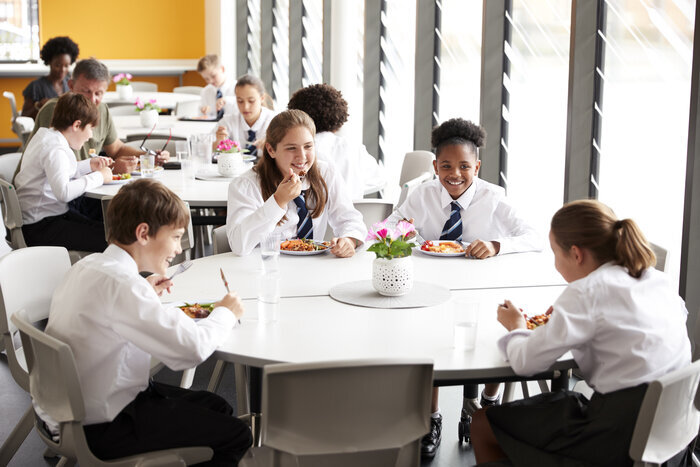
"Serving a hot, nutritious daily meal to pupils would mean that parents, schools, and their caterers would have more faith knowing that children are getting the food that they need.
For many vulnerable children, their hot school meal is the only meal they have in the day. A more straightforward (and healthier) food offer would go a long way to ensure pupils eat food that meets the mandated school meal standards rather than being lured away by the daily temptation of their favourite food. " Jeanette Orrey, co-founder of Food for Life.
As we mark the beginning of Healthy Eating Week, putting hot school meals on the menu during school lunchtimes will be a key driver in providing pupils with consistent, nutritious food as they settle back into their new school routine. And judging by the increase in schools switching to cashless payments and a grab and go style of lunch service, pre-ordering software will be the future of the Covid-19 friendly school lunchtime experience.

School lunch options differ drastically by country. From four-course meals consisting of roast beef, tabbouleh and apple tart in France to spaghetti with seafood sauce and fish fillet au gratin in Italy, each nation offers unique meal choices for school pupils.
Children worldwide can access various foods to tuck into at lunchtime. At ami Education, we are looking at what school lunches look like worldwide and how these differ by nutrition and variety.
United Kingdom
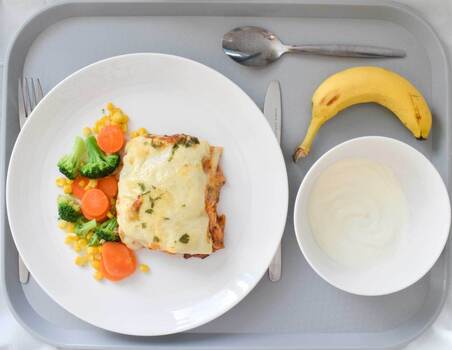
(Teaching Abroad)
Starting with the home country of AMI's headquarters, UK school canteens have seen drastic changes to the food provided over the years, with a dramatic shift toward more nutritional food in recent years, thanks to Jamie Oliver's Feed Me Better campaign in the noughties. Oliver's campaign increased the standards of school meals and reduced saturated fat, sugar and salt in the food served to children.
Current UK lunch options are far more varied, with increased options for different dietary preferences. Research by the Childen's Food Trust shows that school meals in the UK are consistently more nutritious than packed lunches, providing children with a better foundation for good health.
Typical hot school lunches include vegetarian lasagne, pasta bake, fresh salads, jam roly-poly, and more, with healthy options and some old classics added.
France

(Sweetgreen)
Known for its culinary delights, France offers its pupils slightly more decadent options, including brie, steak, and apple tart, to name a few, whilst adhering to strict nutritional regulations concerning portion sizes, nutritional composition, and cooking methods.
For example, starters containing more than 15% fat can be served up to 4 out of 20 days, which means that salads, grilled chicken with grains and even roast guinea fowl make regular appearances on French school menus.
Italy

(Sweetgreen)
As a nation with a healthier and perhaps more inclusive attitude toward food, it is no surprise that Italians focus on setting up children for healthy eating habits in adult life, and school lunches are the perfect way to promote healthy eating practices. Guidelines state that Italian school lunches must include a starchy dish such as rice or pasta, a main course such as meat, fish, cheese, two or more vegetable side dishes, and plenty of fruit.
Besides, Italian law is stricter regarding unhealthy food on school menus and forbids cafeterias from serving deep-fried food such as chips and fried chicken. Therefore, popular lunch items include minestrone, mushroom risotto, and the occasional scoop of gelato.
Greece

Unlike the other countries in this list, lunch is considered the main meal of the day in Greece, which means pupils often eat lunch at home or bring a packed lunch to school, and therefore, many schools don't offer subsidised school lunches. However, schools that serve lunch offer options including baked chicken with orzo, cucumber and tomato salad, stuffed vine leaves and yoghurt with fruit for dessert.
Sweden

(Casey Lehman)
Research shows that receiving free or reduced-price school lunches reduces food insecurity, obesity rates, and poor health. What sets Sweden apart from other countries is that since 1997, all children have had access to a free hot school lunch, which consists of a hot meal, salad buffet, bread, and a drink, with vegetarian options available.
Swedish schools do not serve desserts and soft drinks. In recent years, they have removed options such as pizza and deep-fried food, focusing on healthy and sustainable meal options such as meat or vegetable stew with potatoes, pasta with sauce, and Knäckebröd, Sweden's famous crispy bread.
Japan
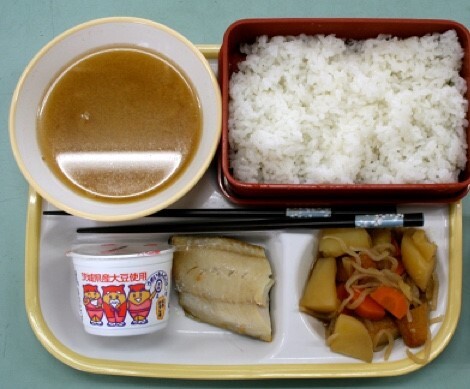
(The Japan Guy)
Japanese nurseries and middle schools offer pupils school lunches. They are served in the classroom, emphasising nutrition education, teaching pupils how to cook healthy food from scratch, and making students aware of the nutritional components of their food.
Japan has one of the lowest obesity rates globally, likely due to offering pupils food such as miso soup with pork, rice with grilled fish, milk, and dried fruit for dessert.
South Korea
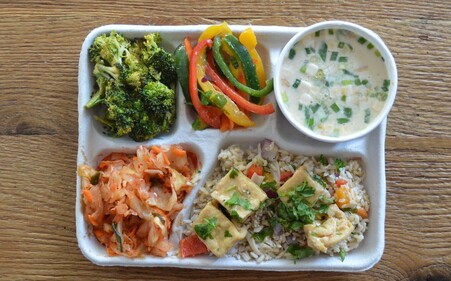
(Sweetgreen)
South Korea is another country known for its healthy school lunch offerings and emphasis on health education. Since pupils are encouraged to partake in various extracurricular activities after school, they need healthy lunch options to sustain them into the evening. Popular dishes include fried rice with tofu, kimchi, fish soup and mixed green vegetables.
America
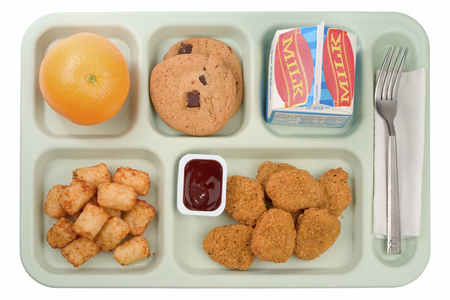
Lastly, America is famous for its numerous junk food offerings and fast food outlets on every corner. In US schools, the National School Lunch Programme provides low-cost or free school lunches to 31 million students at more than 100,000 schools per day, and meals must meet the nutritional standards based on the Dietary Guidelines for Americans.
However, tight budgets and unhealthy school vendors have meant that lunches served in some US schools (but not all) are highly processed and lacking in fresh fruits and vegetables. These lunches often look like popcorn chicken with French fries, mashed potatoes, fruit cups, and chocolate chip cookies for dessert.
Resources for schools:
- Taking cash out of schools
- Why do schools need queue management?
- Why pre-ordering meals are essential for schools

What are the benefits of pre-ordered school meals?
Reports have found that food wastage costs schools over £250 million each year. Pre-ordering school meals reduces food wastage drastically and associated costs. This innovative software aims to reduce food wastage by providing school meal service providers with exact numbers of meal portions to prepare that day, eliminating the need for over-catering and ensuring children receive the meal they want.
Although school caterers generally have information on the number of pupils they are cooking for, they have no information about the specific numbers for each meal option in most schools. Although they are skilled at estimating how many children will choose each meal, they have no way of knowing the exact numbers, and this lack of information can result in food wastage.
What are the benefits of pre-ordered school meals to students and parents?
With a system that allows pre-ordered school meals, children and parents can choose their preferred meal option meaning not only reduced wastage but better food education, encouragement of healthy food options and increased parental engagement.
According to BUPA, the UK has one of the highest rates of childhood obesity in Europe, with 1 in 10 children aged 4 to 5 classified as obese and around 1 in 5 children aged 10 to 11. Pre-ordering meal software allows pupils to be actively involved in planning their meal choice and to take ownership of their diets.
Recent research has focused on how environmental changes and behavioural economics can guide children to make healthier choices to encourage students to select more nutritious foods. Pre-ordering school meals could pre-empt hunger-based, random selections and eliminate the sensory cues evocative smells and sights that lead to less healthy choices.
For a student, getting their meal choice, feeling comfortable with the process, not being rushed, and not having to wait in long queues are critical elements for schools adopting a pre-ordered approach to school meals.
There is also the benefit for children with food allergies and intolerances, as pupils can select a pre-ordered meal according to the necessary specifications.
Pre-ordering school meals also benefit students by reducing queueing at mealtimes. The lunchtime rush becomes a smoother experience with meals already ordered and paid for, as children simply have to collect their chosen meal from the cafeteria.
Reducing student meal queuing times further means a reduced percentage of pupils favouring out-of-the-gate spending, lowering the likelihood of excessive junk food consumption, leading to childhood obesity.
Pre-ordering is essentially pre-empting, and in today's society, using technology to plan ahead is the most efficient way to control an entity such as a school. Technology enables schools to pre-plan, taking the opportunity for human error and unnecessary time spent away and allowing better use of school resources.

Transforming the lunchtime experience post-lockdown
One thing that is seemingly unavoidable in day to day life is queuing. Be it at the supermarket, post office or dry cleaners, waiting lines happen everywhere, anywhere and to anyone. Yet one place in which queues are in surplus and yet hugely unacknowledged or addressed is in schools. Despite sometimes being as disastrous as in retail, queuing in schools is rarely discussed.
The first contact with queuing in schools happens as students are trying to enrol and stretch their time in education to queue for mealtimes, school trips, registration and more. The biggest offender by far is the day to day slog of mealtime queuing in schools. Long waiting times matched with only a short period in which to eat makes lunchtime queuing something that needs to be addressed and improved for the benefit of staff and pupils.
The age-old custom of waiting in line wastes the average person up to two years of their life, according to a study by Casumo, and although saying goes 'time is money,' time is also time, something which students can't afford to waste. A student's priority is to study, and with a solid queue management system in place that follows strict social distancing rules, pupils can use the time saved for more essential school matters.
What are the results of poor queue management in schools?
A secondary school in London found this out the hard way, as its pupils were shunning food in a school canteen and instead were favouring the option to leave school grounds and purchase their lunches rather than queue for the school meals provided. This kind of 'out-of-gate' spending can mean students are consuming unhealthy foods for lunch, which the school cannot fully control. Unhealthy lunches are one of the main contributors to childhood obesity and poor nutrition in children.
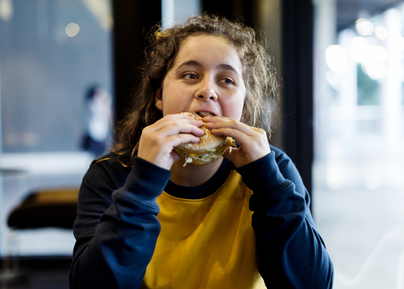
Lengthy waiting times for lunch isn't an issue confined to smaller state schools either and arguably, somewhat worse than the out-of-gate junk food purchasing seen in London. In Neath, South Wales, pupils of a £40m Baglan Bay High School have waited throughout the entire lunch break and had to go back to class on an empty stomach.
What are the solutions for better queue management in schools?
Introducing cashless catering software such as ami's Transact meal ordering and registration for primary schools is revolutionary in cutting school lunch wait times. Allowing pupils to pre-order their lunch choices via an interactive whiteboard or the teacher's PC enables younger pupils to select their food in a fun and interactive way.
After placing the order, the pupil's lunch choice is sent to the kitchen to be prepared for when they arrive at the dining hall, reducing the need to queue whilst pupils make their lunch choices.
Other solutions to reduce school queues include AMI's ID management system and contactless cards, enabling schools to reduce contact at lunch whilst ensuring pupils abide by new social distancing measures. This software offers real-time database sync from the MIS system, meaning there is no chance of mistakenly missing students, with all applications managed through one central database.
ID management software, including AMI's Identity Management solution, identifies students through their contactless cards to make payments, gain access to areas, reset passwords and much more, saving vast amounts of time and resources during the mealtime rush. Queue management software leads to more efficient waiting times, organisation, and simplified identity management.
By using a cashless catering system and ID management software, schools can generate reports to show what food has been ordered and keep track of food wastage at the click of a button. This functionality gives schools control over the content of their pupil's meals, benefits their budgets (by avoiding unnecessary spending) and allows them to be environmentally sensitive by not contributing to food wastage.
Whilst a more efficient waiting area layout partially solves queuing controversy in schools, which will improve as more schools place ordering and collection points around the school, the core problem lies in queue management. The solution, therefore, is to invest in a queue management system for schools.
It is not enough to say that schools need queue management to ensure their students eat correctly and on time. When social distancing and minimal contact are key, cashless software is crucial to protect pupils and reduce the risk of germs spreading as lockdown measures ease, and pupils return to school.
Visit here to learn more about ami's full range of cashless catering and Identity Management solutions.

Reducing food wastage in schools
We are all encouraged to adopt eco-friendly habits such as recycling, switching off lights when they are not in use and taking shorter showers. But reducing food wastage could be one of the critical actions we can take to minimise our environmental impact.
On Stop Food Waste Day 2020, we are looking at how schools and pupils can reduce food wastage to help protect the environment and save time and money.
Many adults are aware of the smaller measures they can take to help protect the environment. While these efforts should be encouraged, schools need to instil these habits from an early age and make pupils aware of their impact, especially when it comes to wasting food.
Whilst most schools teach pupils about ways to help save the environment, schools and caterers can put these lessons into practice every lunchtime by taking the appropriate measures to keep food wastage to a minimum.
Reduce food wastage with cashless catering software
Switching to cashless catering such as pre-ordering software is one of the most effective ways schools can minimise their environmental impact and reduce food wastage on a larger scale.
ami's range of pre-ordering software, including Transact, allows pupils of all ages to pre-order their school lunches, sending orders to the kitchen ahead of time to enable catering staff to prepare meals in advance. By informing staff of meal choices in advance, schools can avoid producing too much food and can focus on only preparing what is necessary.
Transact provides a fun and interactive solution for pupils to pre-order their meal selection during the morning registration process on a primary school level. Pupils can make their selection at a teacher's PC or interactive whiteboard, sending orders to the kitchen in advance.
Giving younger pupils the option to choose their food in a fun and interactive way encourages them to take an interest in their food choices, increasing the likelihood of eating all their lunch and reducing the risk of food left on the plate.
Pre-ordering school meals also helps reduce food waste by minimising queuing times. Allowing pupils to choose their favourite lunch options in advance ensures they have access to the food they enjoy, whilst reducing queuing times and giving students adequate time to enjoy their lunch. By improving the dining experience and making lunchtime enjoyable for all pupils, food wastage can be reduced and save schools time and money.
Where food is wasted in schools
Waste management experts WRAP found that in both primary and secondary schools, the kitchen and canteen areas produced most of the total food waste, representing food prepared and served but not eaten in the canteen.
In primary schools, the total produced in these two areas was 72%, with an equal split between the kitchen (36%) and canteen (36%), which can be reduced by implementing cashless catering software, benefitting staff and pupils.
The organisers of Stop Food Waste Day encourage everyone to pledge to reduce their food wastage and urge others to do the same. They have found that 33% of all food produced globally is lost or wasted every year, whilst 25% of global food waste could feed 795 million undernourished people in the world.

How schools can help
Here are some other ways that schools can encourage pupils to reduce their food wastage:
- Serve correct portion sizes- younger children don't need big portions. Therefore, when given more significant quantities of food, they are likely to become too full and leave the majority on their plate, which can be avoided by serving portions appropriate to the child's age. Encourage older pupils to eat smaller portions and only go back for seconds if they are still hungry.
- Encourage school dinners over packed lunches- a recent study by the Institute for Social and Economic Research at the University of Essex found free school meals in schools to be a valuable weapon in the fight against childhood obesity, containing more nutrition than packed lunches. Giving pupils a range of choices for their lunch means they are more likely to choose the food they enjoy, whilst schools can monitor the nutritional value of the options provided.
- Encourage school dinners over packed lunches- a recent study by the Institute for Social and Economic Research at the University of Essex has found that the provision of free school meals in schools is a valuable weapon in the fight against childhood obesity, with school meals providing more nutrition than packed lunches. If pupils are given a range of choices for their lunch, they are more likely to choose the food they enjoy, whilst schools can monitor the nutritional value of the options provided.
- Promote a calm eating environment- many pupils are likely to get excited about lunchtime. However, if the dining hall is noisy, this can cause an unpleasant eating environment for some pupils, prompting them to avoid spending time in the dining hall, leaving behind the food on their plates.
- Make pupils aware of the issue- especially for older pupils; schools can demonstrate the impact of food wastage on their environment on a broader scale, similarly to Loughborough High, who launched a campaign after realising how much food was wasted. They started by measuring a week's waste and then filling the equivalent of black bags (around 20) with paper and cards and putting them in the middle of the school hall, so pupils saw them when they arrived for assembly. The students were asked to come up with their ideas for reducing waste.
Visit Stop Food Waste Day's website to learn more about the campaign.
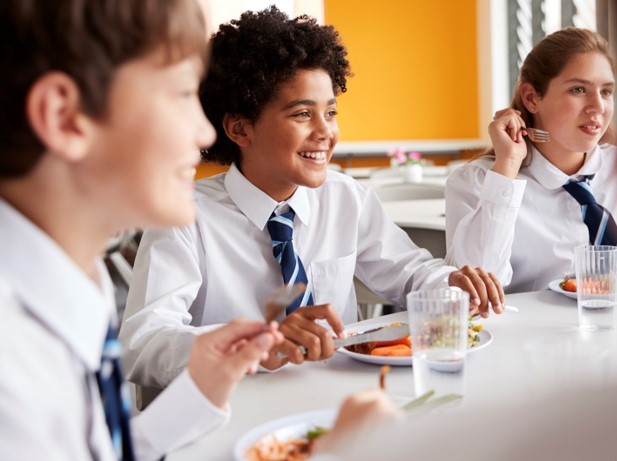
With automated payment methods and debit cards replacing traditional cash payments, it is becoming more common within businesses industries, and now, most recently, schools are switching to cashless. Figures from the Payments Council published on Education Business reveal that cashless payments overtook traditional cash payments in 2014 for the first time.
What are the benefits to schools going cashless?
There are many benefits of switching to cashless systems, one of which affects a school's budget and resources. Offering parents the ability to review their expenses and top-up their child's online account is a great way to boost a school's income and spending per pupil.
Although small payments such as those regularly made by parents for school meals, uniforms and educational trips contribute considerably to the overall school income, they can also create a market deficit when they go unpaid. 'Dinner money debt' is now a serious concern for schools, with one council in Wales recently revealing a debt of over £130,000 aggregated over five years. A cashless system diminishes the potential for unpaid fees.
Furthermore, taking cash out of schools benefits budgets by saving the hefty cost of the physical collection of money to deposit at a bank. Ami's cashless software generates daily, weekly or monthly reports with ease, providing access to information on meals consumed, overdue accounts and food wastage, all of which contribute to lowering costs and reduced administration time.
As for the benefit of a school's resources, cashless catering systems free up a considerable amount of time for the administration staff. Taking cash out of schools can cut down the tiresome task of physically collecting and chasing cash payments from pupils and parents via mail and telephone.
Software such as ami's Infinity and Transact frees up these essential resources for use in other ways. Administration staff can easily monitor payments, view historical purchases, and make audit trailing a lot more efficient. Using cashless software, schools in the UK have saved on average two and a half days of administration time a month.
How do cashless schools benefit parents and students?
Taking cash out of the school system is not only time saving, but it gives parents the peace of mind that pupils spend money in the way as intended with online payments. Pre-paid school meals mean parents know that children use lunch money for healthy, nutritious meals.
Additionally, parents no longer need to send cash or cheques for circumstances such as school trips or extra-curricular activities. Ninety per cent of parents stated that they preferred to pay online, according to a survey from LACA.
Ami's cashless catering solutions also increase parent convenience and control. They are accessible from any location with an internet connection, optimising parents' increasing access to computers and hand-held devices. Almost one in 10 public school pupils are from overseas, so this level of access is beneficial for those families.
What are the benefits of removing physical cash from schools?
Removing physical cash from schools allows for increased student safety. Adopting a cashless system prevents age-old issues such as bullying, lunch money theft and potential misplacement or loss and eliminates any money safety issues. Students also no longer need to worry about forgetting to take cash to school and missing out on meals, as they are already pre-ordered and paid.
How can going cashless make a school more efficient?
Ami's cashless catering software is flexible and works around each school's requirements. During lunchtimes, for example, cashless software systems provide significant time-saving benefits such as reducing queues. Schools can cut down lengthy waiting times for their students and staff through quick and straightforward identification methods such as PINs, pre-order kiosks and more.
Pre-ordering meals in advance greatly minimise food wastage. Ami's software allows school meal service providers to know exactly how many portions of each meal option to prepare that day, eliminating over-catering and ensuring children receive the meal that they want.
What benefits does a cashless system have on a social level?
Cashless catering software removes any potential discrimination of students by providing Free School Meals (FSM) anonymity. A recent LACA survey revealed that 4.9 per cent of pupils entitled to a free meal do not take up their entitlement. The stigma of FSM is still very much apparent in schools, yet with a cashless system, all students have the same method of payment option, regardless of their circumstances.
Cashless systems have also proven to promote healthy eating, encouraging pupils to eat the nutritious meals provided, which is exceedingly essential when tackling the childhood obesity crisis and leading to a better learning environment. Mealtime pre-ordering encourages parent engagement and allows parents to control what their children consume when they are not with them.



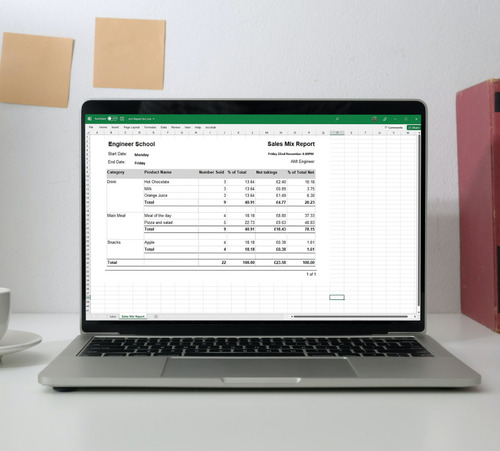









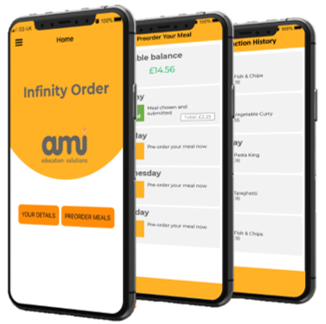







Follow us on: